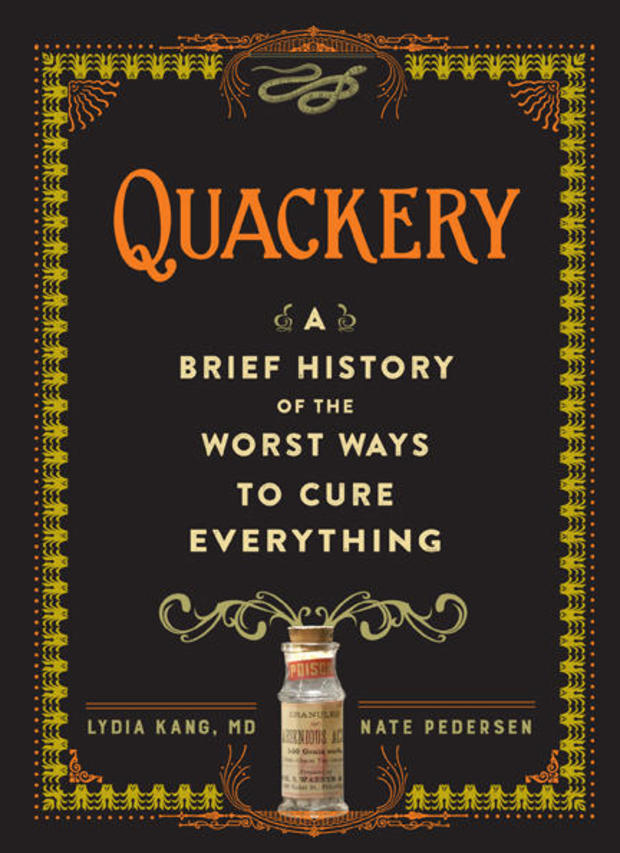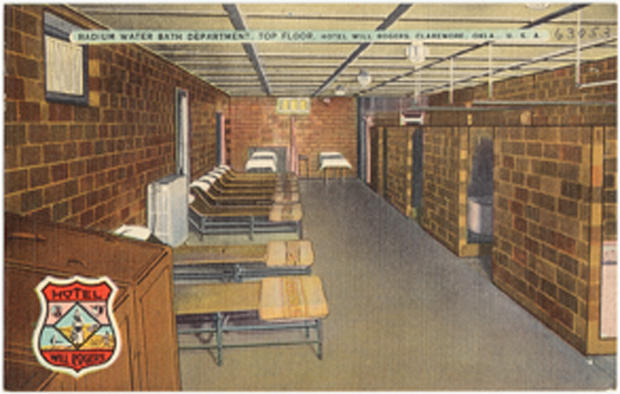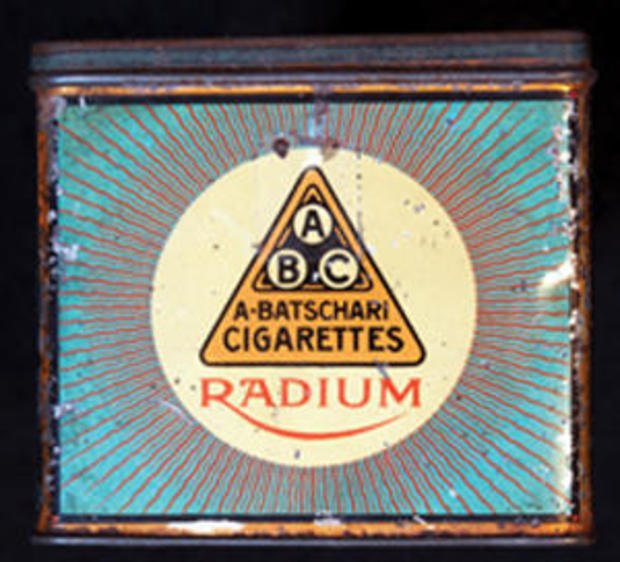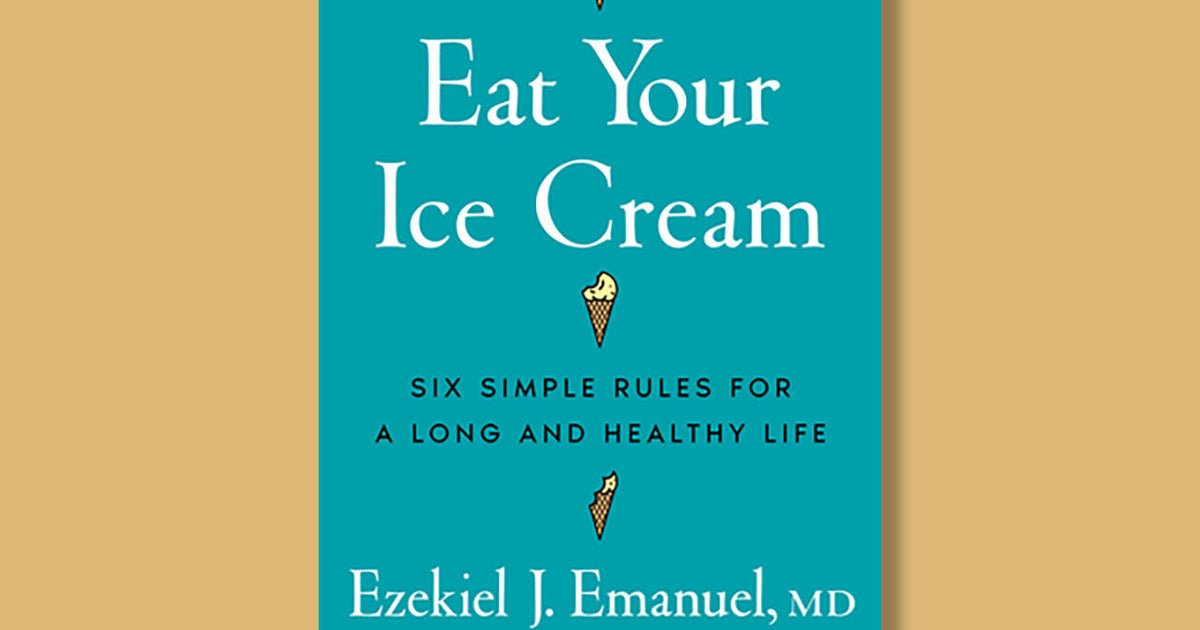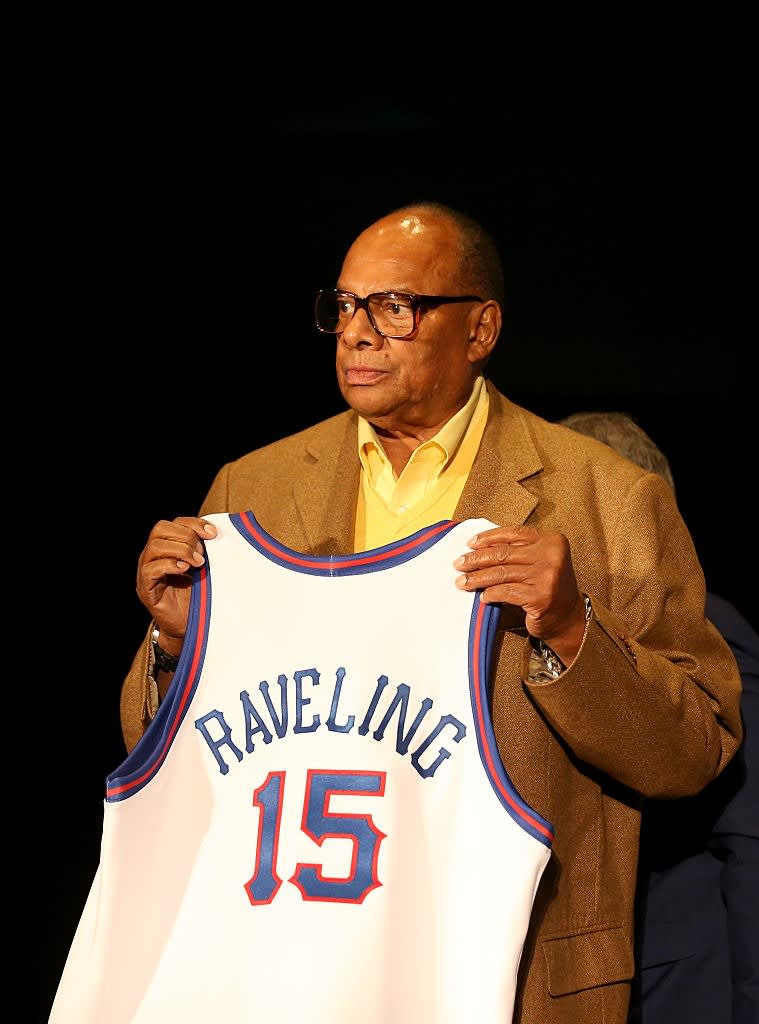Book excerpt: "Quackery," on how radium acquired a glowing reputation as a cure-all
Dr. Lydia Kang and Nate Pedersen's book, "Quackery: A Brief History of the Worst Ways to Cure Everything" (Workman Publishing), explores the history of charlatans and snake oil salesmen taking advantage of a gullible public – and the bad medicine and science practiced over the centuries by credulous but well-meaning doctors who truly believed imbibing arsenic or strychnine could cure a wide range of maladies.
Read an excerpt from "Quackery" below about the radioactive isotope radium (once prescribed for muscle aches, diabetes, or as a beauty enhancer); and don't miss Mo Rocca's interview with Dr. Kang on "CBS Sunday Morning" April 26!
Radium & Radon
Late one November evening in 1927, Eben Byers – a forty-seven-year-old industrialist, socialite, and ladies' man – fell from his berth in his private chartered train.
That night he'd been in an exuberant mood, having just watched Yale, his alma mater, defeat Harvard in their annual football match. Buoyed by his team's win, Byers launched the kind of party only a wealthy playboy could host on a private train in the Roaring Twenties (aka the kind of party we all wish we could attend every Friday night).
During the late-night revelry, Byers took a bad fall and injured his arm. When the pain remained with him several days later in the comfort of his mansion, he turned to his handsomely paid physicians. They were stumped. Despite their best efforts, Byers's arm pain would not subside. The injury had a detrimental effect on his serious golf game. (He had won the US Amateur Championship twenty-one years earlier, in 1906.)
Worse for the wealthy playboy, the injury dampened his raging libido. The notorious womanizer was desperate for solutions. At a loss, one of Byers's physicians suggested he try a new patent medicine called Radithor. Manufactured by Bailey Radium Laboratory in New Jersey, each bottle of Radithor was guaranteed to contain two microcuries of radium, the new kid on the medical block and still blossoming with potential. Radithor was widely advertised as a cure-all for some 150 maladies, including dyspepsia, high blood pressure, and impotence. It also didn't hurt that the doctor, along with every other physician who prescribed Radithor, received a generous 17 percent kickback from the manufacturer.
Byers began taking the medicine. When his arm pain improved, he became convinced that Radithor had increased his vitality. He began drinking three bottles of Radithor a day in December 1927, three times the recommended daily amount. It was a luxury unique to his financial situation because the average person couldn't afford to keep up that kind of dosage. And that was a good thing – by 1931, the industrialist had built up radiation dosage levels equivalent to receiving several thousand X-rays.
Unfortunately for Byers, this level of radiation didn't turn him into a Marvel superhero. It slowly – and gruesomely – killed him.
Behold, the Power of Radium!
Famously discovered and isolated by Marie and Pierre Curie – who ultimately gave their health, and in Marie's case, her life, for this scientific breakthrough – radium was embraced by the medical community of the early twentieth century for its striking ability to destroy cancerous cells. Of course, the problem with radium is that it's less like a heat-seeking missile and more like a nuclear bomb. It can affect any cell it encounters, cancerous or not.
Before the dangers of radium were fully understood, however, the element enjoyed a brief life (half-life?) as the celebrity element du jour. In 1902, the Curies first isolated radium chloride from a uranium-rich mineral and ore now called "uranite." (A quick primer: As uranium decomposes, it transforms into other elements. Radium is just a stop on the one-way decomposition train from uranium to lead.) The new element, which Marie called "my beautiful radium," glowed with both radioactivity and medical promise. Radium had a half-life of sixteen hundred years and had a radioactivity level of about three thousand times that of uranium. It was enormously rare and enormously intriguing. (And enormously dangerous, but we'll get to that later.)
Less than a year later, while commenting on radium's ability to cause deep flesh burns, Pierre Curie suggested that it might have potential to treat cancer. Initial results were very promising, particularly with skin cancers. The next year, 1904, saw John MacLeod, a physician at Charing Cross Hospital in London, developing radium applicators for treatment of internal cancers as well, which shrank tumors.
It's difficult to overstate the importance of that discovery. After losing the war against cancer for centuries, we finally had an ally. And it even glowed! So it was no surprise that, in addition to treating cancer, physicians in the early twentieth century experimented with using radium for hypertension, diabetes, arthritis, rheumatism, gout, and tuberculosis.
Despite the passage of the Pure Food and Drug Act in 1906, radium remained entirely unregulated because it was classified as a natural element rather than as a drug. And so quacks across the country began exploiting radium's mysterious qualities for their own gain. (Advertisements sprang up in newspapers: "Radiate Youth and Beauty," "Radium is Restoring Health to Thousands," and "Remarkable New Radium Cream Liniment Drives Out Pain from Aching Joints and Muscles Instantly!")
The only saving grace was that radium was extremely expensive because of its scarcity. As a result, the vast majority of radioactive products peddled by quacks around the United States did not actually contain any radioactive ingredients at all, a quirk of the supply and demand process that undoubtedly saved hundreds, perhaps thousands, of lives.
Radon, the Revigator, and Other Crocks
The first wave of radioactive products to hit over-the-counter markets were water based. Medical opinion had landed on radon (the gas produced by decomposing radium) as the curative, life-giving property in hot springs that were popular around the turn of the twentieth century – especially the famous springs in Arkansas. No one really knew what it was about the hot springs that made them curative, but once the presence of radon was identified, it wasn't much of a leap to assume that radioactivity was responsible. Radon, however, had a serious problem. It can only temporarily remain in water before it either decays or evaporates into the air.
Today, we explicitly try to remove radon from our drinking water (obviously). But in the early twentieth century, a lively trade sprang up in devices built to do the exact opposite. In addition to soaking in radon-laced pools, many people believed drinking radioactive water was generally a good idea, sort of the equivalent of downing a green drink today. One of the most successful devices to add radon to water was the Revigator, invented by R. W. Thomas and patented in 1912. The Revigator was described as a "radioactive water crock," which was essentially true – it was a large jar made of radium-containing uranium ore with an attached spigot. Consumers were instructed to fill the jar every night and "drink freely," averaging between six and seven glasses each day. The Revigator became your very own home radioactive spring, guaranteed to produce a "health-giving drink." And if you had any leftover water at the end of the day? Advertisements encouraged consumers to water their plants!
One of the problems with the Revigator – besides slowly poisoning people with about five times the radium concentration recommended for drinking water – was its lack of portability. Several similar but smaller devices sprang onto the market, including the Thomas Cone, the Zimmer Emanator, and the Radium Emanator, all of which operated on the similar principle that you simply plopped them into water you were about to drink. (These devices, collectively dubbed "emanators," were typically manufactured from carnotite ore, a primary ore of uranium. The uranium would gradually decompose, producing radium and radon gas in turn, which then infused the water to make it radioactive.)
At last, you could make radioactive water anywhere. Traveling salesmen could rest assured that their drinking water at night in their roadside motel was suitably irradiated.
As the relationship between radon and radium began to be understood more clearly (in terms of radioactive potency, radium is basically radon squared), it wasn't long before manufacturers began to release products allowing consumers to directly consume radium or apply it to their skin. Throughout the 1920s, a variety of radium-based cosmetics were released on the market, including beauty creams, salves, soaps, and toothpaste. Yes, toothpaste. It wasn't enough to have white teeth in the 1920s; those little pearls had to glow.
Excerpted from "Quackery: A Brief History of the Worst Ways to Cure Everything" by Lydia Kang, M.D. and Nate Pedersen. Workman Publishing © 2017. All rights reserved.
For more info:
- "Quackery: A Brief History of the Worst Ways to Cure Everything" by Lydia Kang, M.D., and Nate Pedersen (Workman Publishing), in Hardcover, eBook and Audio formats, available via Amazon
- lydiakang.com
- natepedersen.com
